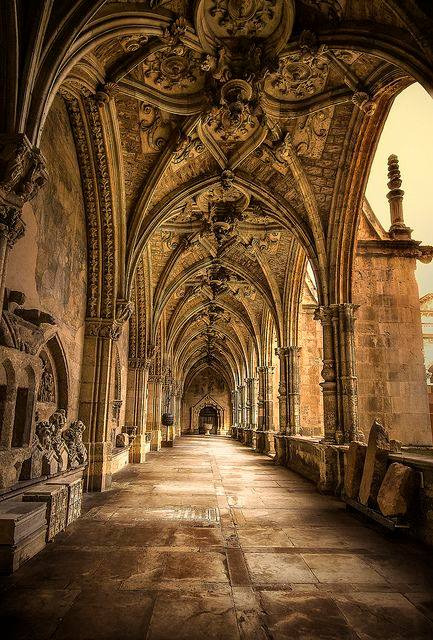#Cathedral of Santa María
Photo

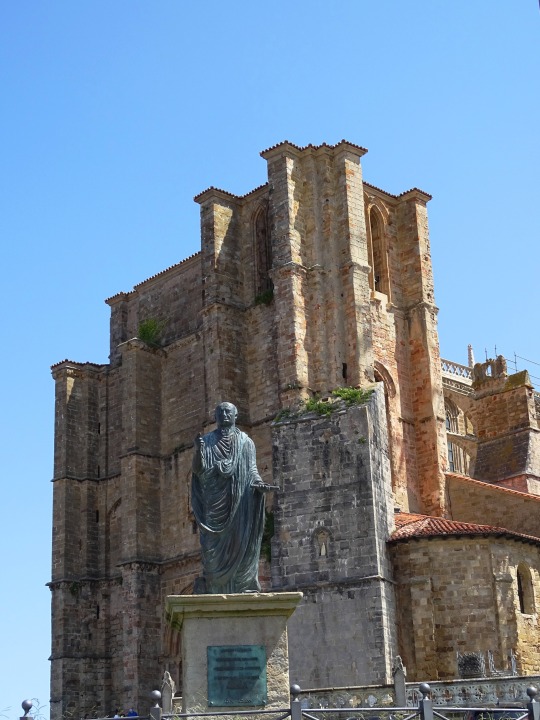
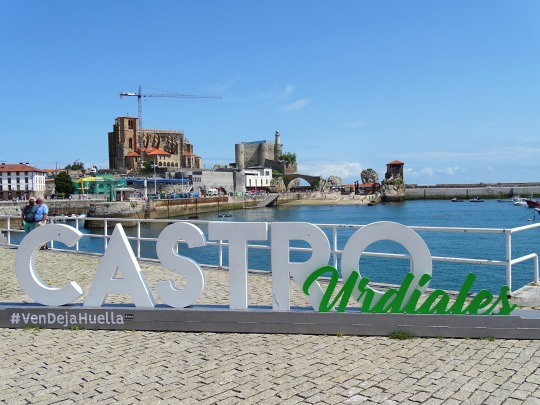





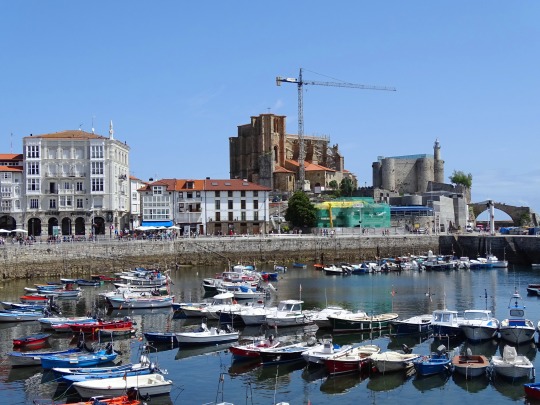

Church of Saint Mary of the Assumption,Castro Urdiales (No. 1)
The church of Santa María de la Asunción in the town and municipality of Castro-Urdiales (Spain), known locally as the Cathedral of Santa María (although it is not a cathedral), is a Catholic temple of Gothic style built between the thirteenth and fifteenth centuries that is located in front of the Cantabrian Sea, next to the castle-lighthouse and next to the fishing port of the city.
In 2015, in the approval by Unesco of the extension of the Camino de Santiago in Spain to "Caminos de Santiago de Compostela: Camino Frances y Caminos del Norte de España", it was included as one of the individual assets (ref. no. 669bis-011) of the Camino del Norte.
Source: WIkipedia
#Church of Saint Mary of the Assumption#Castro Urdiales#Cantabria#travel#Bay of Biscay#César Vespasiano Augusto#Cathedral of Santa María#Gothic style#exterior#façade#summer 2021#architecture#cityscape#Port of Castro Urdiales#Santa Ana Castle Lighthouse#Cantabrian Sea#vacation#Cantabric coast#original photography#tourist attraction#detail#sculpture#Puebla Vieja#Northern Spain#Southern Europe#España#Spain
2 notes
·
View notes
Text

Palm trees / cathedral ramparts
Sevilla, Spain -- 2/13/04
#fotografía#fotografía original#original photography#photographers on tumblr#artists on tumblr#photography#sevilla#arquitectura#architecture#cathedral#catedral#catedral de santa maría#catedral sevilla#spain#españa
17 notes
·
View notes
Text
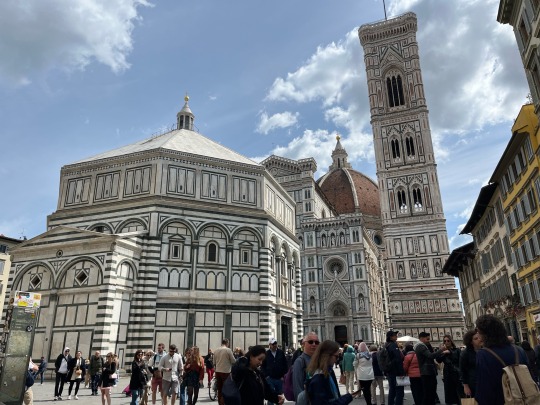



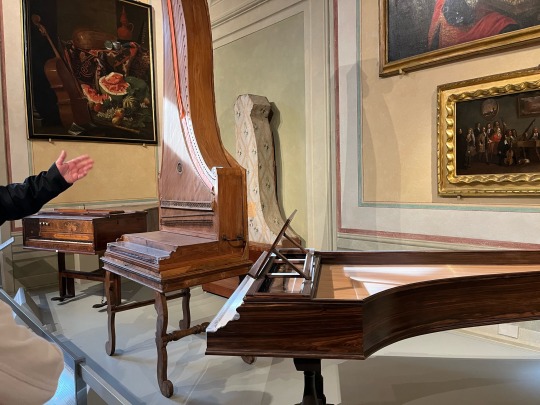

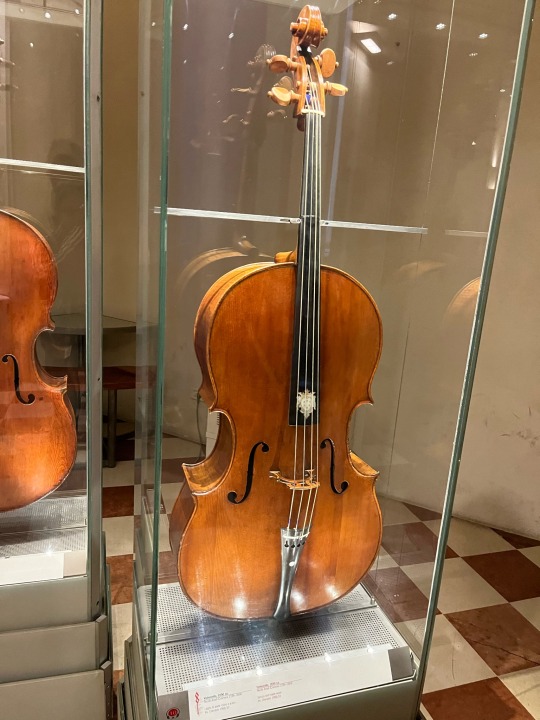
A day in florence| una giornatta a Firenze
#travel#florence italy#Firenze Italia#la academia museum#galleria dell'accademia#Santa María cathedral
3 notes
·
View notes
Text

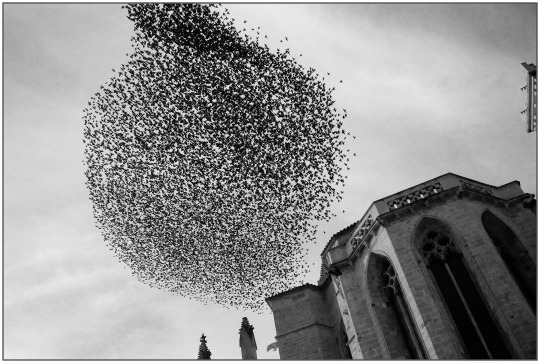

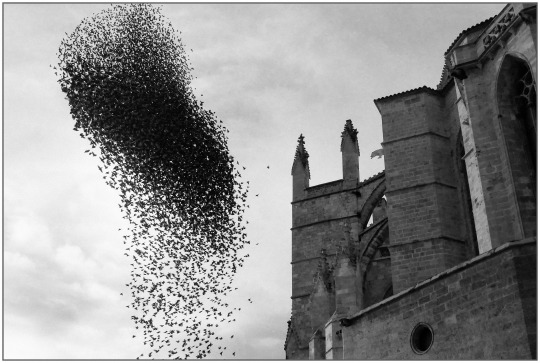

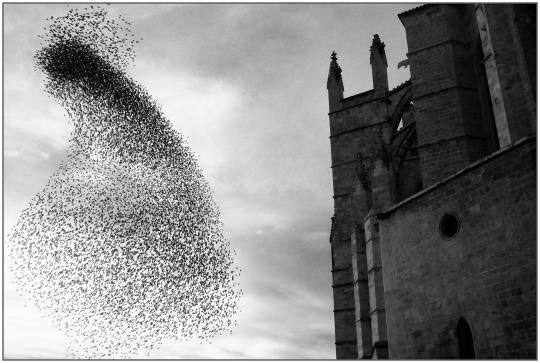
Clouds of starlings over the cathedral. Catedral de Santa María. Palma, Mallorca.
#photographers on tumblr#street photography#mallorca#black and white#palma#cathedral#gothic#birds#stralings
70 notes
·
View notes
Text
For the Princess of Asturias 18th birthday bells will ring in all Royal Sites and Palaces and churches in Asturias on October 31st, 2023.
Pictured are the Royal Site of the Monastery of Santa María la Real de las Huelgas in Burgos, Oviedo's Cathedral (Asturias), Covadonga Basilica (Asturias) and the Royal Site of La Granja de San Ildefonso in Segovia.
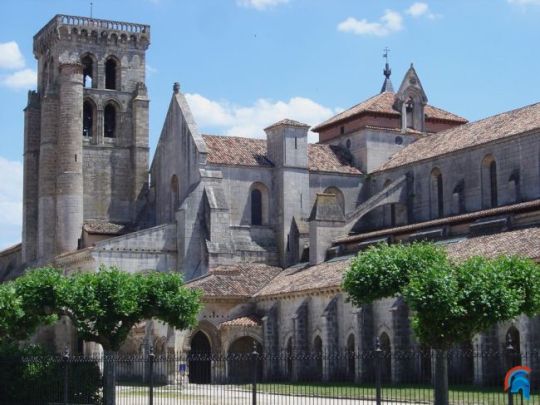



21 notes
·
View notes
Text
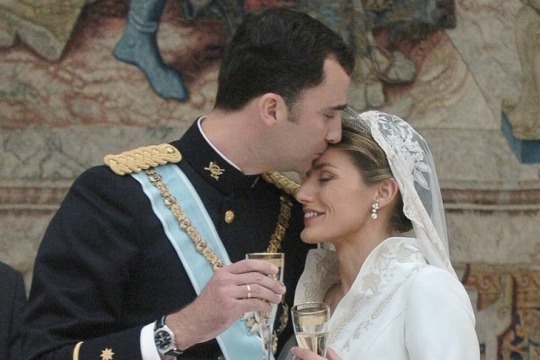

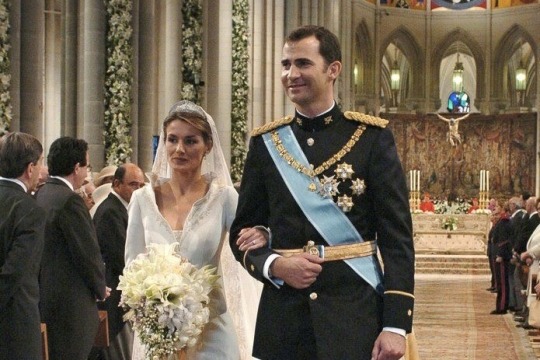
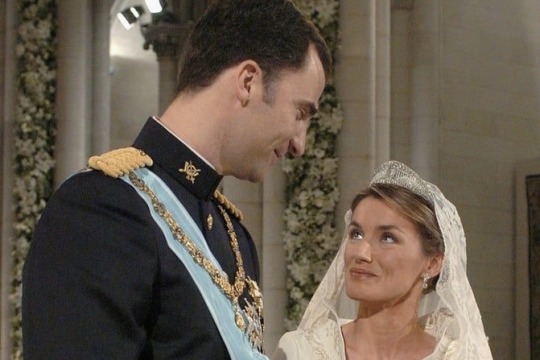
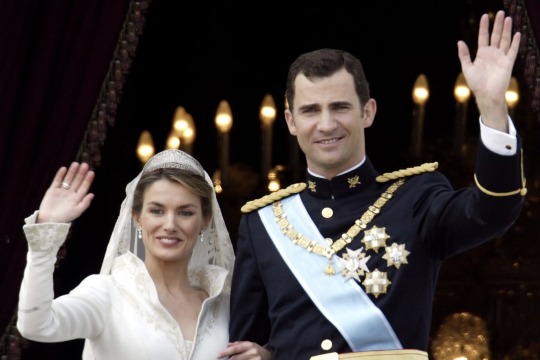

The royal wedding of Felipe, the Prince of Asturias and Letizia Ortiz ♡
The wedding of Prince Felipe and Letizia Ortiz was held on May 22nd 2004, in the Santa María la Real de La Almudena Cathedral at the Royal Palace of Madrid, Spain. The couple’s engagement was announced on November 1st, 2003.
The wedding was the first state wedding in Spain for more than 50 years, and the first royal wedding in almost a century to be held in the Spanish capital. More than 1200 guests attended the wedding, including from 36 royal houses and almost every head of state from Latin America.
Letizia wore the Prussian Tiara, also worn by Queen Sofia at her wedding. The wedding dress, designed by Manuel Pertegaz, was white, tight around the waist, with long sleeves, a neckline in the shape of a corolla, a wide skirt and a 4.5-meter long train embroidered with heraldic motifs. The bride's gown was woven with Valencia silk and embroidered with silver and gold threads. The nuptial veil was a gift from the Prince to Letizia; with a triangular shape, three meters long by two wide, of natural silk tulle in ivory white with scrolls and hand-embroidered wreaths, which mixed the fleur-de-lis and the spike. The shoes were made by the illicitana designer Pura López. Felipe wore the Great Tag suit of the Army.
Upon the wedding, Letizia received all constitutional titles recognized to the Prince as heir to the Spanish throne, such as: The Prince and Princess of Asturias, the title of the heir of the Crown of Castile; The Prince and Princess of Gerona, the title of the heir of the Crown of Aragón; The Prince and Princess of Viana, the title of the heir of the Kingdom of Navarre; The Duke and Duchess of Montblanch; The Count and Countess of Cervera; The Lord and Lady of Balaguer.
The royal wedding was broadcast by Spanish public television, reaching a national record as the most-watched television program ever with 25.1 million viewers in Spain alone. Approximately 5,600 media outlets from around the world covered the wedding with a potential audience of between 1.2 and 2 billion.
42 notes
·
View notes
Text
currently seething in class because every time we see gothic architecture in art history we gloss over a big part of it.
there is a big disregard towards any gothic architecture that deviates from the french model. for example, there are big diferences between this style and italian gothic architecture.

this is the cathedral of Siena. It uses bonkers materials and colors in comparison with the more traditional gothic. It also has a cool ass bell tower, but just one and on one side of it, breaking simetry.

this is the basilica of Santa María del Mar, in Barcelona, and it has a very different spatial philosophy than french gothic. In the latter, the aim was to create a very tall central nave and smaller lateral ones to generate contrast. In the gothic architecture developed in the eastern part of Spain and Italy, the aim is to achieve a more equal space, with a more even height.
english gothic is just bonkers all around

you have absolutely insane columns and ceilings like this one in the Gloucester cathedral,

you have Lincoln cathedral, with the fucking widest front i've ever seen
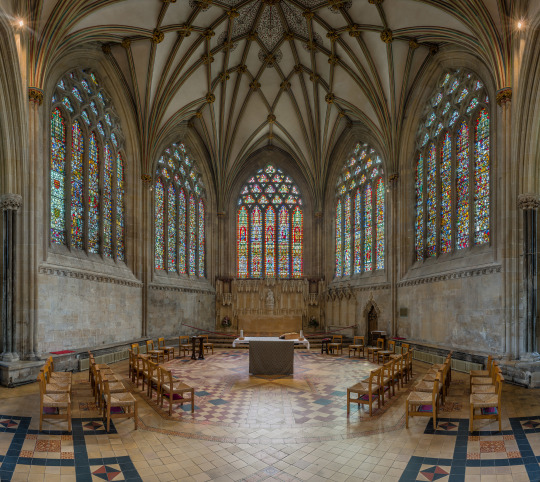
and you have CIRCULAR ROOMS WITH THESE KINDS OF CEILINGS (from the Wells Cathedral).
but most annoyingly, no one ever talks about the Cathedral of Palma de Mallorca
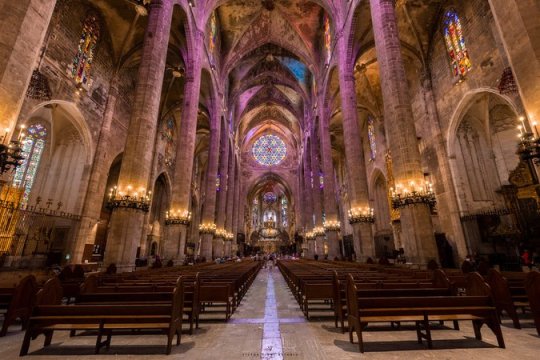
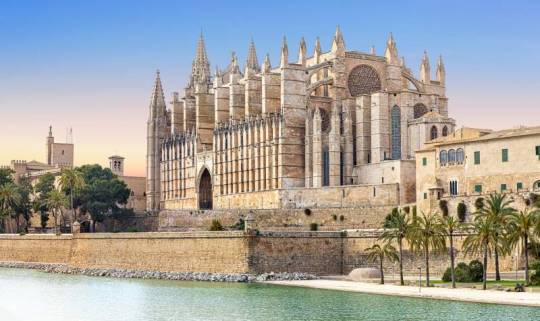
this is the biggest rosette in all of Europe (and safe to asume in the entire world). it's so fucking cool, it even does light tricks in certain times of the year


like these ones. AND IT'S NOT EVEN MENTIONED. IN A STYLE IN WHICH THE LIGHT IS ONE OF THE MOST IMPORTANT ELEMENTS
so yeah, i have Thoughts and Feelings about gothic architecture :)
17 notes
·
View notes
Text
A Napoleon wannabe: Agustín I of México

At the end of its war of independece Mexico declared its independence froms Spain and its desire to be a monarchy through the treaties of Córdoba. The crown of this new Mexican monarchy was offered to Ferdinand VII of Spain. The Spanish refused to accept ruling Mexico as an independent country, since they still considered it a colony.
A clause had been added to the treaties, however, that stated that in case neither Ferdinand VII or his descendants accepted the crown, the Mexican counsil would be free to choose its own monarch. This paved the way for General Agustín de Iturbide’s eventual coronation as emperor.

The Spanish monarchs are not crowned; it’s not a tradition they have, since they don't believe they were chosen by God to rule, but that they were born to do it. So if Iturbide wasn't following a presedent set by the Spanish monarchy, why was he crowned? Who’s example was he following? You see... According to historian Manuel Villalpando, Iturbide was inspired by Napoleon Bonaparte’s coronation, so much that writer José Joaquín Fernández de Lizardi (one of Itrubide's critics, who would eventually end up in jail) wrote on the newspaper:
“So it’s being debated how our Agustín must dress on the day of his coronation? So no expenses have been spared to make him look oh, so magnificent? All this care seems just and fair for the hero of Iguala, but what I fear is that they’ll make him look ridiculous by adorning him with novelty.
I’ve heard that some what to dress him in the European style; others, in the Mexican style; yet others want a mix of them both. Some want to dress him like the German emperors; others, like the Romans; and not few want to dress him like the Napoleons.
[After describing tentative styles for Iturbide’s robes] That is designed to make him look more as a true Indian huehuenche [person who organizes the local festivities of small towns or villages, usually of indigenous origin].”

Villalpando lists other ways with which Iturbide sought to make his coronation look like Napoleon's:
Instead of Marshals, there were the Generals of the Empire;
Instead of the Legion of Honor, there was the Imperial Order of Guadalupe;
Instead of Notre Dame, there was the Metropolitan Cathedral of Mexico;
Iturbide's coronation robes were even similar to Napoleon's
His fall:
Iturbide would make several political mistakes. Foreign freemasons, i.e. American special envoy Joel Roberts Poinsett and Colombian ambassador Miguel Santa María, would conspire against him... And Itubide was not the only ambitious man with a hunger for power.
Encouraged by Poinsett and Santa María, General Antonio López de Santa Anna (one of the most fascinating and hated characters in Mexican history) proclaimed the Plan of Veracruz in 1832, taking arms against Iturbide. The empire began to crumble, and the news of the Santa Anna’s plan arrived to the ears of a man in hiding in the caves of Veracruz, a former insurgent leader, a man that never accepted the Viceroy's pardon in a time when most of the independentists leaders had taken it or had been excecuted. This man was Guadalupe Victoria, a friend of Santa Anna’s; the man who would become the face of the Plan of Veracruz, and also the future first president of Mexico. They were joined by Vicente Guerrero and Nicolás Bravo. The old insurgents were back after being cast aside by Iturbide’s empire, and they were determined to ensure his fall.
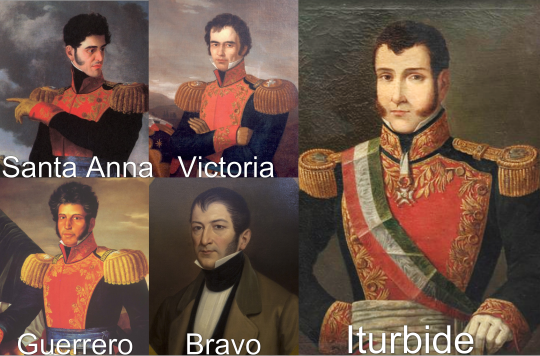
#agustín de iturbide#mexican history#napoleon bonaparte#mine#vicente guerrero#guadalupe victoria#american history
31 notes
·
View notes
Text





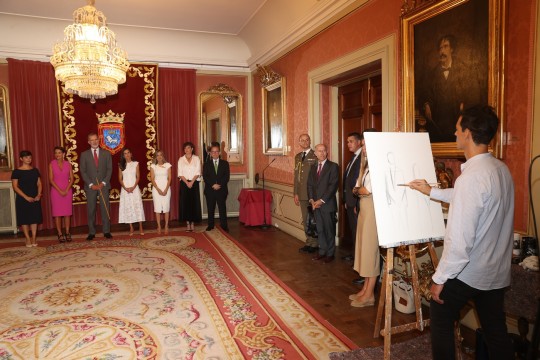
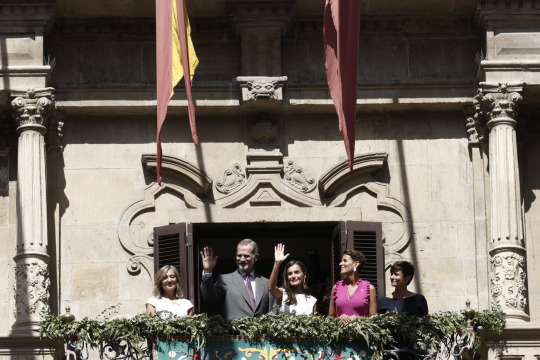





September 08, 2023: King Felipe and Queen Letizia attended the commemoration of the 6th Centenary of The Privilege of The Union in Pamplona
The Privilege of the Union
The Privilege of the Union is the treaty by which the three main towns that formed the city of Pamplona in the Middle Ages were united by a document signed on September 8, 1423 by King Charles III of Navarre “the Noble”. Until that day each town had had its own flag and alderman.
The Privilege of the Union was printed by agreement of the Royal Council of Navarra on December 17, 1618, there were two hundred copies, so that all the inhabitants of Pamplona, and especially those who lent money to the city’s coffers, were aware of it.
Measuring more than two meters, it consists of twenty-nine chapters, the last of which mentions the Royal Oath of Privilege, considering it as perpetual jurisdiction before the three States gathered in Pamplona. Today the hallway of the Pamplona City Hall houses a reproduction of the document.
Every September 8 and the week before, Pamplona celebrates the Privilege of the Union with an agenda of activities that includes various musical and artistic events, the traditional medieval market and guided tours of the Town Hall.
On September 8, the day the document was signed, the Comparsa de Gigantes y Cabezudos de Pamplona accompanies the parade of the Municipal Corporation as a city body that runs through the streets of the three old towns. And later the response and offering to Carlos III takes place in the Cathedral of Santa María.
Following tradition, the weekend closest to Union Privilege Day, the streets of the Historic Center of Pamplona host the medieval market of the Tres Burgos.
#King Felipe#Queen Letizia#King Felipe of Spain#Queen Letizia of Spain#King Felipe VI#King Felipe VI of Spain#Official Event#20230908#September 2023
19 notes
·
View notes
Text
Thread about Joanna of Castile: Part 7.2: Juana and Philip arrive in Spain
They reached the high pass of San Adriano, toiling through heavy snow toward Salvatierra/Agurain, where crowds of Basques surrounded them. According to the Reise author, the prince's hands went red from all the besamanos (hand-kissing).
Throughout the journey, French-language chroniclers emphasise Philip’s primacy. The Spanish kings wanted Juana to be protected. They issued instructions to various cities to make sure the princes stayed together under one roof.

At the monastery of Santa María la Real de las Huelgas, outside Burgos, where they attended mass and kissed relics, two ‘equal’ seats awaited them at the high altar.
Bernardino Fernández de Velasco, constable of Castile, greeted them a half-league from the city, whose gates were closed ritually against them until they swore to uphold its privileges. When, at nightfall, they processed to the cathedral, they did so together, under a golden pallium. A single sword, the symbol of sovereign justice, was held before Juana and another before Philip.
At Olías, north of Toledo, Philip came down with measles. This must,
nonetheless, have been one of the happiest moments of Juana’s life. Late one April afternoon, she watched from a gallery as, among an incoming party of riders, she glimpsed a familiar and “very pleasant, laughing face.”

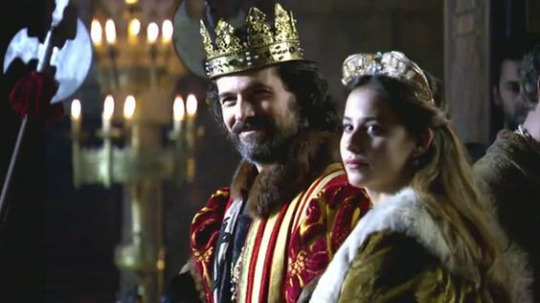
As Juana struggled to get through the crush, Fernando stepped
forward, sweeping off his headgear, and kissed her twice “for joy.”
Seizing his hand, she led him to an inner chamber where she acted as
interpreter between father and husband.
An enthusiastic Philip told his chancellor, Maigny, that Fernando had been:
“très humain et bégnin …autant ou plus que s’il feust esté mon propre père.”
During the entry into Toledo on May 7, Molinet was struck by the ritual struggles between displays of precedence and modesty and respect. Lalaing persists in emphasizing Philip's superiority. The Reise author also focuses attention on Philip and Fernando. Aram argues that Fernando collaborated to marginalize Juana and undermine the principle of female inheritance, which both sanctioned and threatened their authority in Castile.

On 22 May, seated below the monarchs in the cathedral, Juana and Philip were sworn-in as the heirs to Castile, León and Granada. During the ceremony, both sacred and contractual, which opened the Cortes of Toledo in 1502, Juana received allegiance first, followed by Philip as the 'legitimate husband'.”
Juana’s pride in her status is reflected in her commissioning of six stunning tapestries, bought for her pleasure, on 10 August 1502. The “golden tapestries,” worked predominantly in gold and silver thread by Philip’s valet de chambre and tapissier, Pierre van Aelst (or Pieter van Edinghen), with whom Juana had a close working association, and dedicated to the Virgin Mary, remain among the greatest treasures of the Spanish state.
These, connected to foreign policy, seem to involve the whole question of Philip’s political independence vis-à-vis his parents-in-law and wife. In a show of spectacular defiance, Philip sent home the major architects of the Spanish marriage within his council, including its president, Henri de Berghes, and refused to accept the combined pleas of Isabel and Juana to reconsider his decision. The plague may have started to stalk the city. Several courtiers died at this time. Busleyden replaced Berghes but fell sick and, on 23 August, he too died. When the princes left for Zaragoza on 29 August, the political honeymoon was well and truly over. Philip’s
“feet itch, his blood boils … and he can settle nowhere,” writes Martire.

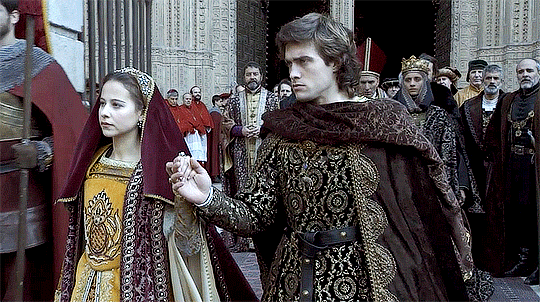

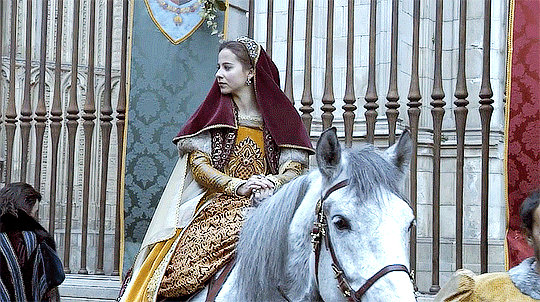
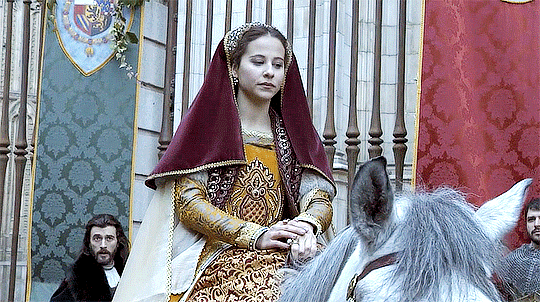




The princes entered Zaragoza on 26 October for the ceremony of oath taking before the Corts.
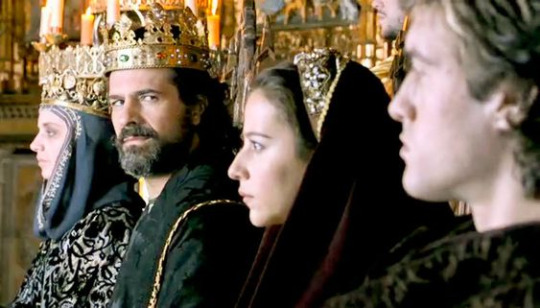
Philip was accepted as the future king, but only in Juana’s lifetime. Juana herself became the first female heir to Aragon, and, in the event, its first and last proprietary queen. Nonetheless, this was a pact conditional upon Fernando failing to produce a new son.
Despite the reservations against female rule, the large numbers attending the ceremonies in Toledo and Zaragoza suggest enthusiasm for the princes.
However, following the partition of Naples, the outbreak of fresh hostilities between Fernando and Louis, culminating in the latter expulsion from Naples, made Philip extremely anxious. Fernando rushed to Madrid, where Isabel was in poor health, before preparing for a fresh military campaign. The monarchs called Philip for talks because they knew he wanted to go home. Juana was left to preside at the Cortes for almost three weeks before she too was recalled. Later Aragonese testimony describes her then much as Fuensalida and Rodríguez de Fonseca had reported:
“very sensible (discreta), prudent (cuerda) and with excellent natural gifts.
After conducting “some affairs” she left Zaragoza on 24 November.
To be continued...
Sources: Fleming, G. B. (2018). Juana I: Legitimacy and Conflict in Sixteenth-Century Castile (1st ed. 2018 edition). Palgrave Macmillan.
Fox, J. (2012). Sister Queens: The Noble, Tragic Lives of Katherine of Aragon and Juana, Queen of Castile. Ballantine Books.
Gómez, M. A., Juan-Navarro, S., & Zatlin, P. (2008). Juana of Castile: History and Myth of the Mad Queen. Associated University Presse.
#joanna of castile#juana i of castile#philip the handsome#juana la loca#isabel#spanish monarchy#johanna van castilie#european history#history#irene escolar#spain#infanta
3 notes
·
View notes
Text
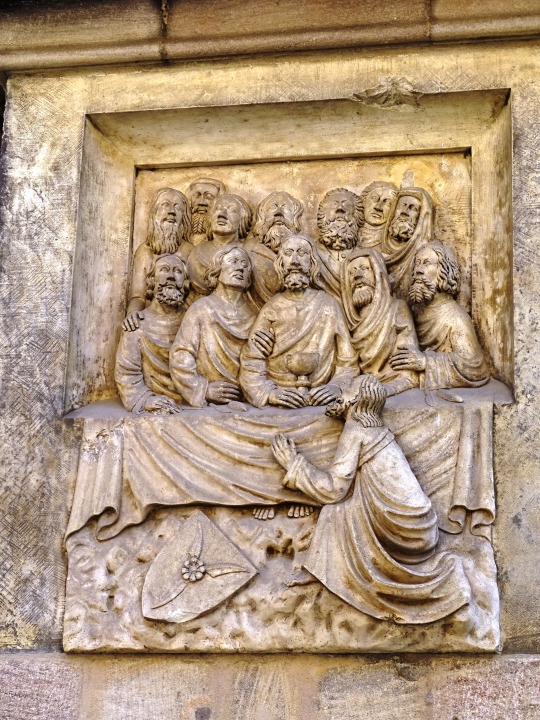

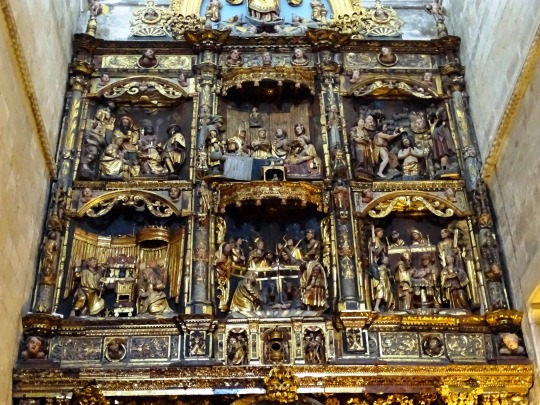



Maundy Thursday
Christians mark Maundy Thursday, which commemorates the Last Supper, every year on the Thursday before Easter, March 28. It’s also know as Holy Thursday, Covenant Thursday, and the Thursday of Mysteries in various traditions.
Maundy refers to the foot-washing Jesus provided the apostles prior to the Last Supper. Christians around the world, especially Catholics, mark the day with a special mass and prayers.
The word “Maundy” itself comes from an Anglo-French word derived from the Latin “mandatum,” which means “commandment.”
Maundy Thursday timeline
2019
Honoring Notre Dame
UK Prime Minister Theresa May announced bells will ring at cathedrals across England on Maundy Thursday. It's a show of support for France following the devastating Notre Dame fire.
1979
The Chrism
The Book of Common Prayer was published in Britain calling for the Chrism Mass to be consecrated by Anglican Bishops.
1945
The bombing of Manila
Maundy Thursday in the Philippines commemorates the seven churches that were destroyed when Manila was bombed in 1945.
1822
Maundy coins
In the United Kingdom, the Church of England created Maundy Coins, handed to parishioners to mark Maundy Thursday. The coins replaced the real currency that was previously given to parishioners as charity.
How to Observe Maundy Thursday
Go to church: Christian churches celebrate with a special mass and prayers. Even if you're not a Christian or a believer, you can learn a lot about one of the more important days on the Christian calendar by visiting a local Christian church.
Learn the story: Holy Wednesday and Maundy Thursday represent the beginning of the transformational story of the death and resurrection of Jesus. We're all better off if we deepen our understanding of the faith traditions of others. Pick up a book or watch a documentary that highlights the importance of Maundy Thursday within Christianity.
Spend the day being humble: Maundy Thursday is a great opportunity to remind ourselves of the importance of humility. Regardless of your own faith traditions, use Maundy Thursday to check yourself throughout the day for signs that you could always use a bit more humility in your life.
Maundy Thursday Around The World
Czech Republic and Slovakia: Maundy Thursday in local parlance translates to Green Thursday, when meals are prepared primarily from fresh, green vegetables.
Kerala State, India: Unleavened Pehasa bread is made in homes and consumed with coconut milk.
Sweden: Maundy Thursday is connected to old folklore as the day of the witches. Similar to Halloween, children dress up as witches and go door-to-door collecting coins or candy.
Bulgaria: Bulgarians color Easter eggs and clean their houses in preparation for what they call Crucifixion Friday.
Luxembourg: Church bells fall silent on Maundy Thursday until Easter, marking a symbolic migration to Rome for confession.
Why Maundy Thursday is Important
Strong traditions: Holy Week is one of the more important celebrations on the Christian Calendar, and Maundy Thursday is a key day of the week. Christian traditions from around the globe, from Armenia to Africa to Germany, mark the day with special masses and prayers.
It celebrates humility: The washing of the disciples' feet by Jesus was intended to be a sign of humility. Jesus was humbling himself before his own servants as a last gesture before knowing he was to be crucified. Masses on this day now highlight the importance of humility in the Christian faith.
It ties Christian denominations together: Christian faiths celebrate Maundy Thursday throughout the world. Part of its tradition, which carries into Good Friday, is for observers to visit 14 different Christian churches, one for each station of the cross. It unifies the Christian church regardless of region or country.
Source
#Maundy Thursday#Gründonnerstag#Thursday before Easter#28 March 2024#Covenant Thursday#Cathedral of St John the Baptist#Charleston#Sebalduskirche#Nuremberg#Nürnberg#Bavaria#Bayern#South Carolina#Germany#Deutschland#Spain#España#Lugo#Cathedral of Santa María#USA#Jesus Christ’s Last Supper#religion#original photography#interior#exterior#Lugo Cathedral#vacation#travel#architecture#tourist attraction
0 notes
Text



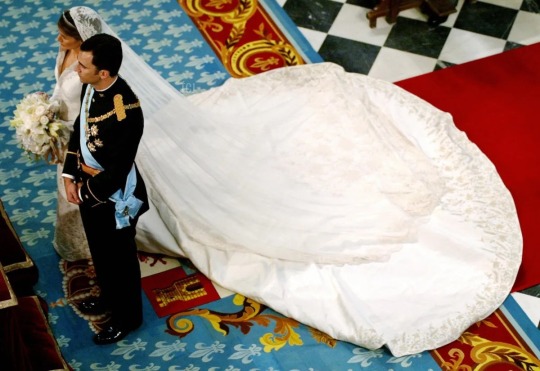





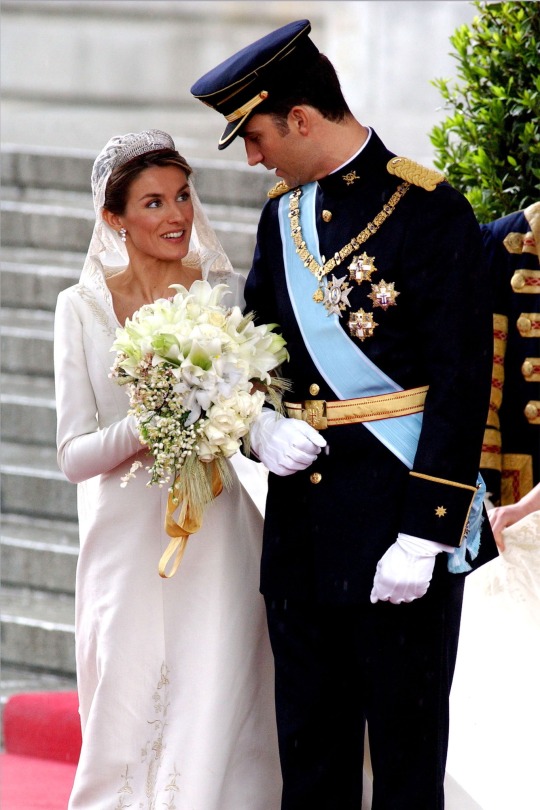
FLASHBACKS
🇪🇸 May 22, 2004
The wedding of The Prince of Asturias and Ms Letizia Ortiz at the Cathedral Santa María la Real de la Almudena in Madrid. It was the first Royal wedding in this cathedral and the first in the capital in nearly a century.
9 notes
·
View notes
Text
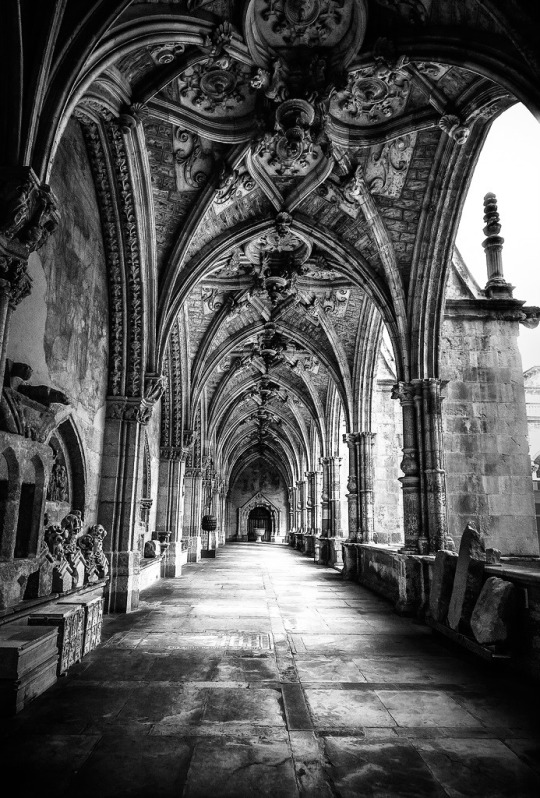
Santa María de León
Cathedral, Spain (1255). 🖤🖤🖤
Lady_Boleyn
27 notes
·
View notes
Text
Documentales
Secrets of the Partheon
El documental "Secretos del Partenón" presenta la historia y construcción del famoso Partenón en la Acrópolis de Atenas. El Partenón fue construido en honor a la diosa griega Atenea y es considerado uno de los monumentos más simbólicos de la antigua Grecia. Este documental muestra cómo los antiguos griegos crearon materiales que han resistido la prueba del tiempo, como el mármol que se usó para construir el Partenón. También analiza cómo la geometría y la simetría jugaron un papel importante en el diseño y construcción de los templos. En definitiva, El secreto del Partenón es un documental divulgativo que desvela la historia y los secretos de uno de los monumentos más famosos del mundo.
Building the Great Cathedrals
Building the Great Cathedrals es un documental que explora las técnicas de construcción y los secretos de las grandes catedrales de la Edad Media. A pesar de estar construidas con piedra maciza, algunas de estas catedrales pueden derrumbarse debido a su antigüedad. Este documental muestra cómo los constructores medievales utilizaron fórmulas matemáticas y principios de construcción para construir estas enormes estructuras de piedra y vidrio, incluidos ejemplos bíblicos que inspiraron su construcción. En resumen, Building the Great Cathedrals es un documental fascinante que nos lleva detrás de escena de algunos de los edificios más impresionantes y duraderos jamás construidos, mientras muestra cómo los constructores medievales lograron construirlos con éxito.
Great Cathedral Mystery
El documental Great Cathedral Mystery explora el misterio detrás de la construcción de la cúpula de la Catedral de Santa María del Fiore en Florencia, Italia. Una obra maestra del Renacimiento, la cúpula sigue siendo la cúpula de ladrillo más grande del mundo más de seis siglos después, más alta que la Estatua de la Libertad. Historiadores e ingenieros han debatido durante mucho tiempo cómo su arquitecto, Filippo Brunelleschi, logró hacer la cúpula perfectamente alineada y simétrica, con los lados elevándose y convergiendo hacia el centro, 40 pisos por encima de la iglesia. Además, sus trabajadores construyeron la cúpula sin una red de seguridad, utilizando métodos nuevos y no probados. En resumen, El misterio de la Gran Catedral es un documental fascinante que revela cómo los constructores medievales lograron construir algunas de las estructuras más impresionantes de la historia sin los avances de la tecnología moderna.
3 notes
·
View notes

